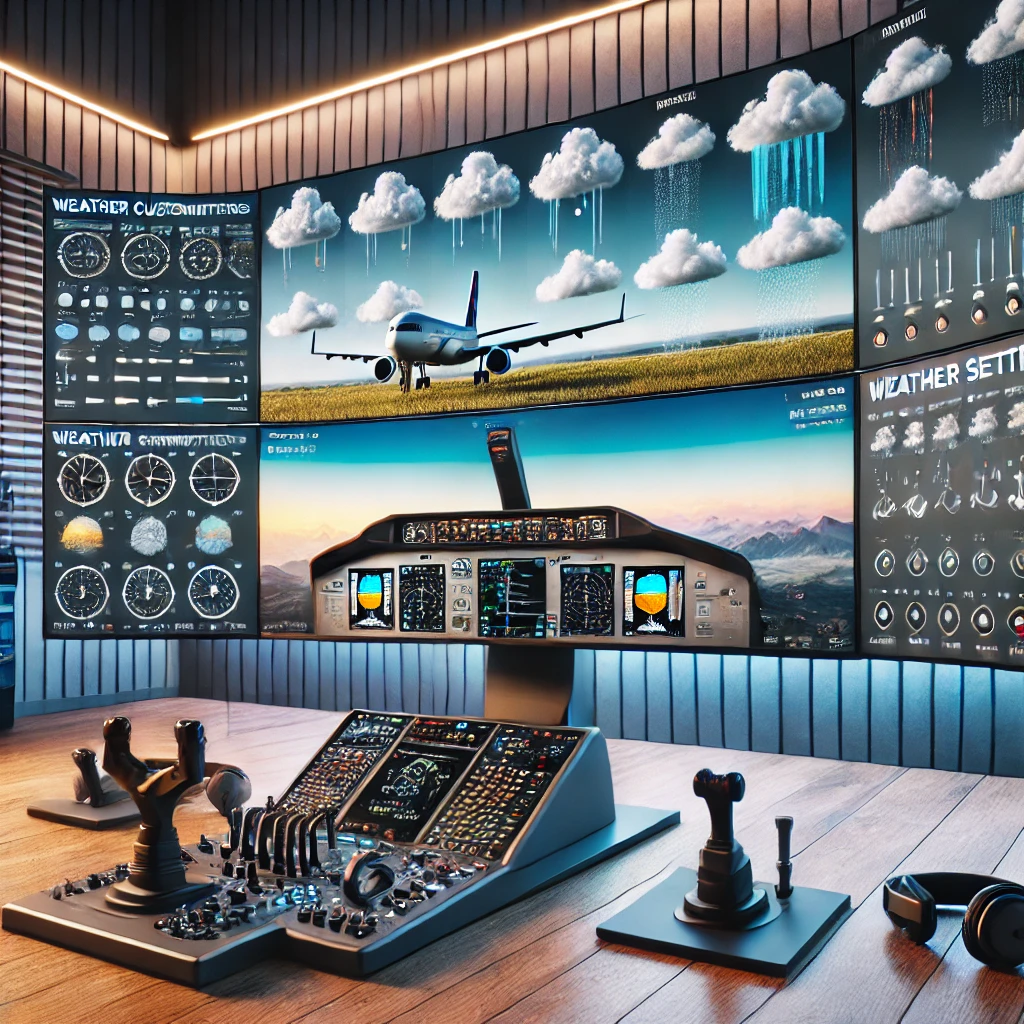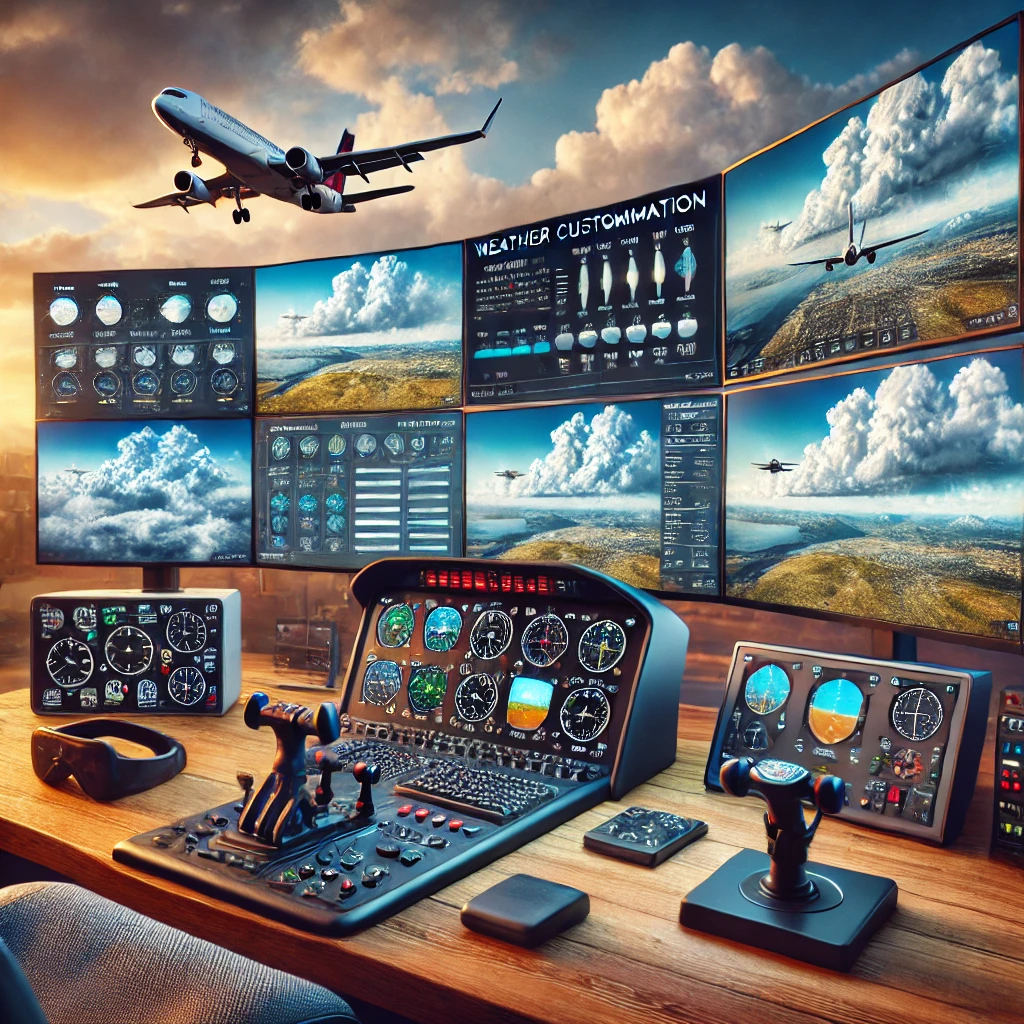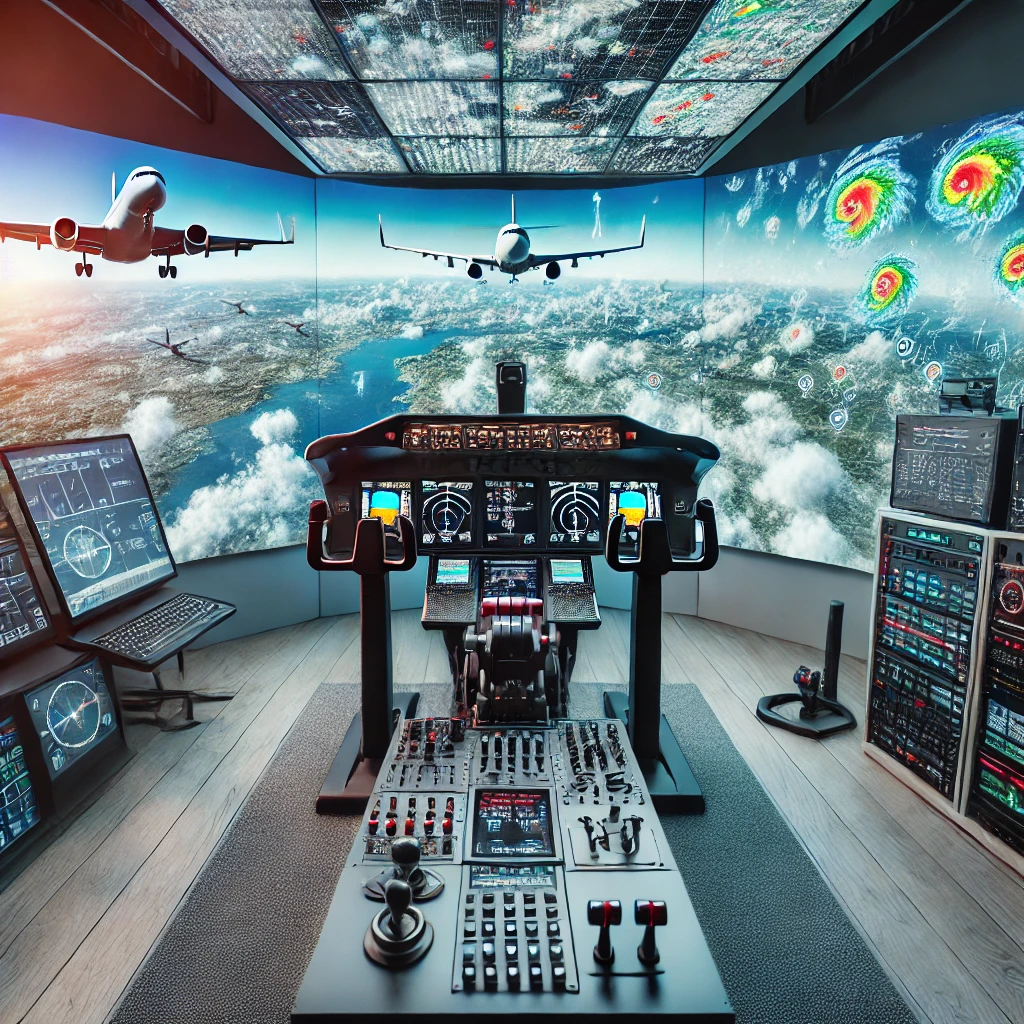Microsoft Flight Simulator Weather – Advanced Forecasting and Effects:

Picture yourself piloting a Cessna at sunrise, with the first light of day casting a golden hue across wispy clouds. Every shift in the sky feels tangible, not as a painted scene but as a dynamic element to navigate. Microsoft Flight Simulator isn’t about aesthetics alone—it brings the thrill and complexity of real-world weather to every virtual flight, making it a challenge and a learning experience in equal measure.
Weather simulation in Microsoft Flight Simulator goes beyond creating a scenic environment. It captures the unpredictability and intricacies of real-world meteorology. From swirling winds that buffet your plane to sudden drops in visibility, every condition shapes your journey. The result is a deeply immersive flight experience that challenges and engages both novice pilots and seasoned aviators.
Gone are static skies of the past. With advanced algorithms powering evolving weather systems, clouds roll, storms form, and pressure fronts shift just as they do in the real world. This blend of technology and realism transforms the simulator into more than just a game—it’s an educational platform that broadens the understanding of aviation’s complexities.
For those interested in the science behind weather simulation, explore the detailed explanation of meteorological phenomena in aviation on the National Weather Service’s aviation page.
Dynamic Real-World Weather Integration: Immersion and Realism:

Microsoft Flight Simulator elevates realism by incorporating live, real-world weather data. Imagine planning a transatlantic flight from New York to London and seeing a massive storm system brewing over the ocean—this isn’t a pre-scripted event; it reflects current conditions happening in real time. When it rains in Tokyo, it rains in your simulation. This integration makes your flights unique and challenging every time you take off.
These real-time weather conditions affect every aspect of your flight. Gentle breezes require subtle course corrections, while gusty winds over mountainous terrain demand sharp reflexes and focused skill. Each weather pattern, from tranquil skies to raging storms, compels you to think critically and make split-second decisions just like a real-world pilot. This isn’t mere gameplay—it’s a simulation designed to test and refine your abilities in authentic conditions.
For aviation enthusiasts, this integration offers more than an adrenaline rush. It delivers a learning platform that teaches valuable lessons in meteorology. Understanding cloud formations, interpreting wind patterns, and grasping the impact of temperature changes become second nature. Every takeoff and landing is a lesson in the art of piloting under varied conditions, ensuring you emerge with heightened skill and confidence.
Discover how Microsoft Flight Simulator integrates real-time weather data by checking out this insightful article on Met Office’s explanation of weather data use in simulation.
Customizing Weather for Training or Thrills: How to Control the Skies:

While real-time weather creates thrilling challenges, there are times you may want to shape your experience. Microsoft Flight Simulator offers detailed weather customization, letting you tailor conditions to suit your goals. Whether you’re seeking to test your limits or fine-tune your skills, controlling the skies puts you in the pilot’s seat of your own learning curve.
Begin by opening the Weather Settings menu. Here, you can manipulate variables like cloud density, wind speed, and visibility to create anything from serene skies to formidable storms. If you’re new to flight simulation, starting with clear skies and light winds lets you focus on the basics of handling an aircraft. Once you’re confident, introduce elements like rain, turbulence, or thick fog to test your adaptability.
For thrill-seekers or pilots looking for realism, the simulator’s settings allow you to create extreme conditions. Dial up gusts, introduce severe icing, or create a scenario where a thunderstorm emerges mid-flight. These conditions don’t just challenge you—they push you to understand the intricate dance between aerodynamics and atmospheric forces. Achieving stability and success under such circumstances is both satisfying and instructive.
Prefer structured training scenarios? Microsoft Flight Simulator includes preset weather themes, ideal for consistent practice or instruction. Whether you’re running simulations for training or just experimenting, these presets provide a baseline for developing vital piloting skills. It’s more than customization—it’s your opportunity to deepen your expertise.
For pilots and trainees looking to deepen their understanding of weather’s impact on flying, the AOPA’s weather training resources provide comprehensive learning materials.
Educational Value Beyond Entertainment: Real-World Skills:

The power of Microsoft Flight Simulator extends well beyond virtual skies. For aspiring pilots, it offers a risk-free environment to experience harsh weather and unexpected changes. Real-world aviation students gain practical insight, seeing how weather directly impacts every aspect of flight. For educators, the simulator bridges the gap between theory and practical understanding.
Imagine a student pilot observing moisture accumulation on the wings during a simulated icing scenario or adjusting altitude to find smoother air. These experiences ground theoretical concepts in practical learning, making Microsoft Flight Simulator an invaluable teaching tool. The lessons gained here don’t just remain in the digital realm—they transfer to real-world piloting.
Hobbyists, too, find purpose in engaging with Microsoft Flight Simulator’s weather system. Whether navigating clear skies or braving a simulated thunderstorm, the simulator turns fascination with aviation into a hands-on learning experience. You gain a new appreciation for how pilots work with—and sometimes against—the forces of nature.
Explore community mods and enhancements that add new dimensions to your flight simulation at MSFS Addons, a hub for Microsoft Flight Simulator enthusiasts.
From Virtual Cockpits to Real-Life Training: Microsoft Flight Simulator’s Broader Impact:

The realism and depth of Microsoft Flight Simulator’s weather capabilities have implications that go beyond mere entertainment. For professional pilots, it offers a chance to practice emergency procedures and adapt to unexpected atmospheric changes. The simulator becomes a vital training ground, refining reflexes and decision-making skills without the risk of real-world consequences.
Instructors can use it as a teaching tool, creating standardized scenarios that simulate everything from calm cross-country flights to emergency descents due to rapidly deteriorating conditions. Each lesson reinforces the importance of adaptability and quick thinking—traits essential for safe flight.
Microsoft Flight Simulator is not just a hobbyist’s dream—it’s a practical tool with far-reaching benefits. Its weather system makes every flight unique, engaging, and educational, shaping pilots who are ready to meet the challenges of the real sky.
Unlocking New Horizons: Community Mods and Enhancements:
The passion for Microsoft Flight Simulator extends into its active community. Modding enthusiasts contribute their own weather enhancements, expanding the simulation’s capabilities. Community mods range from detailed cloud textures and new weather presets to entirely revamped atmospheric systems. By embracing these additions, you can push the limits of what’s possible in your virtual sky.
For a deeper dive into weather dynamics and customization options, explore resources from the MSFS community. Whether you’re interested in modding or simply seeking to understand new dimensions of flight, there’s always more to learn.
Conclusion: Mastering the Elements:
Microsoft Flight Simulator’s weather simulation redefines what’s possible in virtual aviation. Whether soaring through tranquil skies or battling fierce storms, the simulator engages, educates, and challenges at every turn. The blend of advanced technology and real-time data ensures that each flight is more than just a trip from point A to B—it’s a journey through the complexities and wonders of atmospheric flight.
So, take the controls, shape your skies, and embrace the thrill of mastering the elements. Each experience brings you closer to understanding the art and science of piloting. In a world where weather can be both ally and adversary, your skills will shine through every cloud and storm you conquer.

So I could get this in addition to the Fiight Simulator 2020? Or would this be a simulator as well, just with weather features? I like this a lot. My dad is in Alaska, and the weather there is always changing. So knowing how to fly in different weather conditions would be very helpful for sure. He is going to be amazed when I visit the next time!
Yes you can select any kind of weather in Flight Simulator and you can even change the weather while flying.
Hi MElamin,
Wow! this is so interesting when I see that you can change the weather, etc… – What I love is the capabilities the simulator has. Just imagine you can change the weather to think as if it is real. Of course, that is a virtual world. However, this article has kicked my thinking about this simulator.
Thanks – Great job!
Thanks for the feedback. You can also activate real weather in Flight Simulator 2020.
I’m glad I came across your page! I absolutely love planes and helicopters, if I could have the chance to get behind one I would love to fly it!
But this is great, it’s the next best think to flying one, I have heard of this simulator a few times however hadn’t the chance to check it out but after having a sneak peek of what it’s about I’m definitely going to check it out! I love the ability to choose whatever weathers, it’s a great simulation!
Thanks for the feedback.